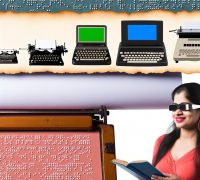Understanding Braille
Braille is a tactile writing system used by blind and visually impaired individuals to read and write through touch. It consists of patterns of raised dots arranged in a grid. This system was invented by Louis Braille in the early 19th century and has become an essential tool for enhancing independence among those with vision impairments.
The invention of Braille marked a significant turning point in the lives of individuals with visual impairments. Historically, options for education and communication for blind individuals were extremely limited. The introduction of Braille provided a standardized method of written communication, thereby revolutionizing both personal autonomy and educational opportunities for the blind.
The Structure of Braille
Braille is based on a matrix of six dots, known as a Braille cell, which can be arranged in various combinations to represent different letters, numbers, and punctuation marks. Each Braille cell consists of two columns and three rows, making it a compact and efficient system for representing the entirety of the alphabet and more.
The arrangement within a single Braille cell allows for 64 possible combinations. These combinations are used not only for the alphabet but also for musical notation, mathematical symbols, and even computer programming languages. This versatility highlights the efficiency and adaptability of the Braille system. Additionally, the introduction of contracted Braille, which uses abbreviated forms of words and common letter combinations, further enhances reading speed and efficiency.
Learning Braille
Learning Braille typically begins in childhood for those who are born blind. For individuals who lose their sight later in life, special education programs offer resources and guidance to master Braille. Mastery of this system opens doors to numerous opportunities, fundamentally sustaining literacy and facilitating effective communication.
Education systems around the world incorporate Braille in their curricula for blind students to ensure they receive equal access to information. These educational efforts are supported by a range of resources, including Braille instructors and specialized learning materials designed to encourage fluency in Braille.
The process of learning Braille involves familiarization with the tactile patterns to instantly recognize the formations associated with different letters and symbols. Practice is essential for developing the dexterity and touch sensitivity required for proficient reading and writing. As learners advance, they move on to more complex texts and scenarios, enhancing their skills further.
Braille in Education
For students who are blind, Braille books and materials are crucial in providing access to the same information as their sighted peers. This promotes inclusion and ensures that blind students receive a proper education. Various organizations and institutions produce Braille texts, from textbooks to literature, ensuring that learning never stops.
Educational institutions often collaborate with organizations specializing in Braille translation and publication, ensuring a wide range of subjects and genres are available in Braille. Furthermore, the adaptation of examination papers and academic resources into Braille is vital to maintaining fairness in assessments.
Braille also plays a critical role in university-level education and professional training programs, enabling visually impaired individuals to pursue a wide array of careers. Academic institutions continue to evolve their support systems, providing assistance and technological resources to ensure that blind students can excel in their chosen fields.
Braille and Daily Living
Braille touches many aspects of day-to-day life, which enhances the independence of blind individuals. From labeling household items to reading medicine instructions, Braille plays a significant role in everyday tasks.
In the realm of personal organization, Braille labeling systems are widely employed to distinguish between different items, such as food cans, clothing, or electronic devices. These labels ensure convenience and safety, particularly where precise identification is essential. For example, medication labels in Braille prevent errors and ensure the correct dosages are taken, ultimately improving health outcomes.
Digital Advancements
With technology advancing rapidly, there are now electronic Braille displays and notetakers that have revolutionized how blind individuals access information on the internet. Organizations continue to invest in research to enhance accessibility through Braille technology.
Braille technology has not only simplified access to written content but has also integrated seamlessly with digital devices. Refreshable Braille displays, for example, allow for the real-time conversion of text on a screen into Braille, enabling access to vast digital resources including eBooks and online articles.
Moreover, portable Braille notetakers allow for data entry and storage, offering a convenient platform for tasks that range from taking notes to sending emails. The availability of such advanced devices empowers visually impaired individuals to actively participate in digital communication and information exchange.
Employment and Communication
Proficiency in Braille is a significant asset in the workplace, offering blind individuals the ability to efficiently read printed materials and digital content. Several companies prioritize accessibility, striving to ensure their materials are available in Braille, thus fostering an inclusive work environment.
The integration of Braille in professional settings begins with orientation and ramping-up processes, where accessible training materials and job-specific resources are provided. It extends to everyday tasks, where Braille aids are used to manage schedules, read reports, and engage in collaborative projects.
Furthermore, employers are increasingly recognizing the importance of inclusive technology solutions. By investing in Braille-compatible software and devices, organizations can enhance productivity and support diverse talent, reinforcing the vital presence of visually impaired individuals in the workforce.
Conclusion
The use of Braille remains essential in providing independence for blind individuals, allowing them to participate fully in society. With ongoing innovations in Braille technology and resources, opportunities for the visually impaired continue to expand, further demonstrating the critical nature of this tactile system.
As society progresses towards greater inclusivity, the significance of Braille becomes increasingly apparent. Its enduring relevance underpins a continued commitment to equality, ensuring all individuals have the opportunity to lead independent, fulfilling lives, regardless of visual ability.








